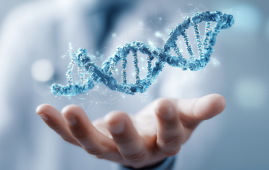

The first 3D human cell culture models of Alzheimer’s disease (AD) that exhibit the two main symptoms of the disease—the formation of amyloid beta deposits followed by tau tangles—were created previously. Researchers are now using their model to examine whether the exercise-induced muscle hormone irisin affects amyloid beta pathology.
The Massachusetts General Hospital (MGH)-led study found encouraging data showing that irisin-based therapeutics might aid in the treatment of AD, which were published in the journal Neuron.
In numerous AD animal models, physical activity has been found to diminish amyloid beta deposition, although the underlying processes are still unknown.
Exercise raises blood levels of the hormone irisin, which is generated from muscles and controls lipid and glucose metabolism in fat tissue and boosts energy expenditure by hastening the browning of white fat tissue.
Irisin is found in both human and mouse brains, and studies have shown that both mice models of AD and AD patients have lower amounts of the protein.
Se Hoon Choi, Ph.D., and Eun Hee Kim, Ph.D., of the Genetics and Aging Research Unit at MGH, together with other research associates, used the hormone to examine if irisin plays a causal role in the association between exercise and lower amyloid beta.
“First, we found that irisin treatment led to a remarkable reduction of amyloid beta pathology,” says Choi. Second, we showed this effect of irisin was attributable to increased neprilysin activity owing to increased levels of neprilysin secreted from cells in the brain called astrocytes.
Neprilysin, an enzyme that breaks down amyloid beta, has been discovered to be higher in the brains of mice with AD that had exercise or other circumstances that resulted in less amyloid beta.
The processes underlying irisin’s association with decreased amyloid beta levels were further elucidated by the researchers. For instance, they discovered that integrin V/5 on astrocytes is the receptor that irisin interacts to to cause the cells to produce more neprilysin.
They also found that the binding of irisin to this receptor results in a reduction in the activation of pathways that involve the two important proteins extracellular signal-regulated kinase (ERK) and signal activator of transcription 3 (STAT3). Reduced ERK-STAT3 signaling was essential for the increase of neprilysin caused by irisin.
Irisin may be effective as a treatment because prior research in mice has demonstrated that it can enter the brain after being injected into the bloodstream.
“Our findings indicate that irisin is a major mediator of exercise-induced increases in neprilysin levels leading to reduced amyloid beta burden, suggesting a new target pathway for therapies aimed at the prevention and treatment of Alzheimer’s disease,” says Rudolph Tanzi, Ph.D., a senior author of the study and director of the Genetics and Aging Research Unit.
Younjung Choi, Sang Su Kwak, Luisa Quinti, Hyeonwoo Kim, Mark P. Jedrychowski, Grisilda Bakiasi, Joseph Park, Jane Kruskop, Christiane D. Wrann, and Bruce M. Spiegelman are additional co-authors.
more recommended stories
 Rising Chagas Parasite Detected in Borderland Kissing Bugs
Rising Chagas Parasite Detected in Borderland Kissing BugsKey Takeaways (At a Glance) Infection.
 Can Ketogenic Diets Help PCOS? Meta-Analysis Insights
Can Ketogenic Diets Help PCOS? Meta-Analysis InsightsKey Takeaways (Quick Summary) A Clinical.
 Ancient HHV-6 Genomes Confirm Iron Age Viral Integration
Ancient HHV-6 Genomes Confirm Iron Age Viral IntegrationKey Takeaways for HCPs Scientists reconstructed.
 Silica Nanomatrix Boosts Dendritic Cell Cancer Therapy
Silica Nanomatrix Boosts Dendritic Cell Cancer TherapyKey Points Summary Researchers developed a.
 Vagus Nerve and Cardiac Aging: New Heart Study
Vagus Nerve and Cardiac Aging: New Heart StudyKey Takeaways for Healthcare Professionals Preserving.
 Cognitive Distraction From Conversation While Driving
Cognitive Distraction From Conversation While DrivingKey Takeaways (Quick Summary) Talking, not.
 Fat-Regulating Enzyme Offers New Target for Obesity
Fat-Regulating Enzyme Offers New Target for ObesityKey Highlights (Quick Summary) Researchers identified.
 Spatial Computing Explains How Brain Organizes Cognition
Spatial Computing Explains How Brain Organizes CognitionKey Takeaways (Quick Summary) MIT researchers.
 Gestational Diabetes Risk Identified by Blood Metabolites
Gestational Diabetes Risk Identified by Blood MetabolitesKey Takeaways (Quick Summary for Clinicians).
 Phage Therapy Study Reveals RNA-Based Infection Control
Phage Therapy Study Reveals RNA-Based Infection ControlKey Takeaways (Quick Summary) Researchers uncovered.

Leave a Comment